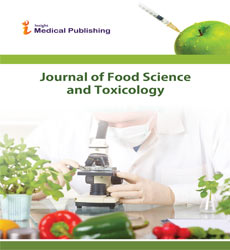GENETICALLY MODIFIED FOODS AND ITS IMPACT ON THE WORLD ECONOMY
Abstract
Biotechnology has provided us with a wide range of options on how we can use agriculture and commercial forestry lands. The cultivation of genetically modified (GM) crops on millions of hectares of lands and their injections into our food all living beings. Considering the fast pace of new advances in production of genetically modified crops, consumers, farmers and policymakers worldwide are challenged to reach a consensus on a clear vision for the future of world food supply. The current food biotechnology debate illustrates the serious conflict between two groups: 1) Agri-biotech investors and their affiliated scientists who consider agricultural biotechnology as a solution to food shortage, the scarcity of environmental resources and weeds and pests infestations; and 2) independent scientists, environmentalists, farmers and consumers who warn that genetically modified food introduces new risks to food security, the environment and human health such as loss of biodiversity; the emergence of superweeds and superpests; the increase of antibiotic resistance, food allergies and other unintended effects. Here I’m going to discuss about benefits and risks of Biotech-crops for human health, ecosystem and biodiversity. We know that although some regulations exist, there is a need for continuous vigilance for all countries involved in producing genetically engineered food to follow the international scientific biosafety testing guidelines containing reliable pre-release experiments and post-release track of transgenic plants to protect public health and avoid future environmental harm. INTRODUCTION ON GENETICALLY MODIFICATION The process of genetic modification began during the 20th century, with one of the most notable experiments starting with wheat and rice. During the 1950s, Norman Borlaug wanted to be able to grow these crops more efficiently while using less fertilizer. The result was a variety of dwarfed wheat and rice plants that were able to absorb more nutrients, leading to increased yield. In the 1970s, the first GM food was introduced to the market; this food was the Flavr Savr tomato. The Flavr Savr tomato was genetically modified to have an increased shelf life. However, the quality of the product did not live up to expectations, and the Flavr Savr tomato was unprofitable and failed to succeed in the market. After the failure of the Flavr Savr tomato, more GM crops were engineered to increase yield and decrease costs associated with production. One such modification led to Monsanto’s creation of Roundup Ready crops. The genetic modification of these crops causes changes to the enzyme that the Roundup herbicide targets in plants. This prevents the crop from being damaged when Roundup is used while weeds are eliminated. Another genetic modification created by Monsanto led to the creation of Bacillus thuringiensis, or Bt crops. These crops incorporate characteristics from a soil bacterium that create chemicals toxic to pests. Because of this, yield of Bt crops is increased because they incur less damage. Today, a variety of these GM crops, namely corn, soybeans, canola, cotton, and alfalfa sprouts, are incorporated into food products on the market, but the prevalence of these GM foods differs from country to country. Consumer concerns over the safety of GM foods have led to the adoption of various policies regarding GMOs in countries worldwide. This paper seeks to examine how such policies have shaped the marketplace in different countries, the negative impact of GM foods on the environment, and the extent to which GM labeling exists for products in supermarkets.
Open Access Journals
- Aquaculture & Veterinary Science
- Chemistry & Chemical Sciences
- Clinical Sciences
- Engineering
- General Science
- Genetics & Molecular Biology
- Health Care & Nursing
- Immunology & Microbiology
- Materials Science
- Mathematics & Physics
- Medical Sciences
- Neurology & Psychiatry
- Oncology & Cancer Science
- Pharmaceutical Sciences
